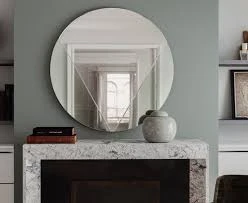

The Innovative World of Reflectorized Glass
Reflectorized glass is an innovative material that has gained attention in various applications due to its unique properties and benefits. This specialized glass is designed to reflect a significant portion of solar radiation, making it a key player in energy efficiency and aesthetic design. Its uses range from architectural applications to automotive industries, contributing to sustainability and comfort in both commercial and residential settings.
At its core, reflectorized glass is created through the application of a thin reflective coating, often made of metals like silver or aluminum. This coating enhances the glass’s ability to reflect sunlight while still allowing for visibility. The result is a product that not only reduces heat gain but also minimizes glare, providing a comfortable environment for occupants. In a world increasingly focused on energy conservation, the demand for such materials is on the rise.
One of the primary advantages of reflectorized glass is its energy-saving capabilities. In commercial buildings, for example, using this type of glass can drastically reduce the need for air conditioning. By reflecting harmful UV rays and reducing solar heat gain, buildings remain cooler and more comfortable. This, in turn, leads to lower energy consumption and cost savings for building owners. Research has shown that using high-performance reflectorized glass can lead to energy savings of up to 30% compared to standard glass.
In addition to its energy efficiency, reflectorized glass also plays a pivotal role in aesthetic design
. Architects and designers appreciate its ability to provide a sleek and modern appearance while maintaining functionality. The reflective properties of the glass allow buildings to blend seamlessly with their surroundings, creating a visually appealing facade that changes with the weather and lighting conditions. This adaptability not only enhances the architectural beauty but also promotes a sense of harmony with nature.
The automotive industry has also embraced reflectorized glass, primarily in the form of tinted windows. Reflectorized glass can significantly improve driving comfort by reducing glare and heat inside vehicles. This has prompted manufacturers to incorporate this technology into their designs, focusing on creating more comfortable and efficient vehicles. In addition, the reduction in heat buildup within cars contributes to lower energy demands from air conditioning systems, further promoting sustainability.
Furthermore, the use of reflectorized glass extends beyond buildings and vehicles. It is also being explored in products such as solar panels, where reflective glass can enhance efficiency by directing more sunlight onto photovoltaic cells. As technology advances, the potential applications continue to expand, paving the way for more innovations that prioritize energy efficiency and environmental sustainability.
However, while reflectorized glass offers numerous benefits, it is essential to consider the challenges associated with its use. The initial cost of installation can be higher than traditional glass, and the manufacturing process can be energy-intensive. Nevertheless, the long-term savings and environmental benefits often outweigh the upfront costs, making it a worthwhile investment.
In conclusion, reflectorized glass stands at the forefront of modern material science, combining functionality, energy efficiency, and aesthetic appeal. As society continues to prioritize sustainability, the demand for innovative solutions like reflectorized glass will undoubtedly grow. Whether in architectural design, automotive applications, or beyond, this remarkable material is set to play a critical role in shaping a more energy-efficient and environmentally friendly future. As we embrace the potential of reflectorized glass, we move closer to achieving a balanced relationship between human design and nature.